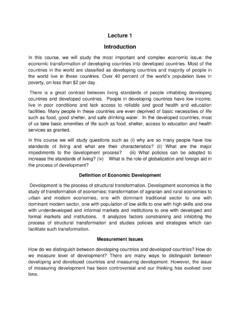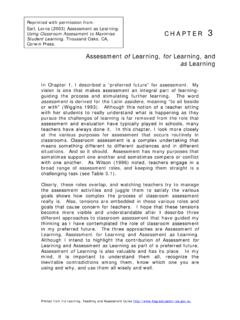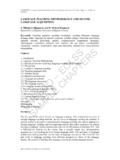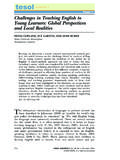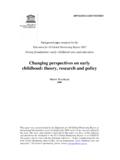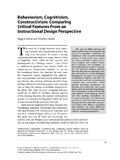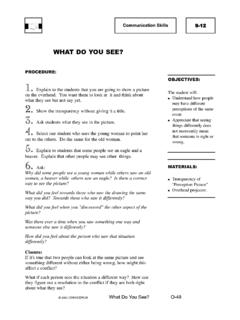Transcription of TakingPerspectives - Web.UVic.ca
1 Taking PerspectivesTaking Perspectives Domain III: Interpreting the Social Meaning of Facial Cues Domain III: Interpreting the Social Meaning of Facial Cues GOAL:GOAL: The goal of this activity to is for the child to be able to use cues in their environment to infer the significance of a given social situation. OBJECTIVEOBJECTIVE:: The child will be able to interpret the expression on a person s face and how it is applied to the context of that person s surroundings.
2 Specifically, the child will build on their recognition and understanding of facial expressions and emotions by interpreting them in a social context. Perspective taking is an important step in being able to empathize and understand the thoughts and feelings of others. MATERIALSMATERIALS: : Clear sheet protectors (optional) or post- it sticky notes Dry erase markers (optional) 20 situation picture cards PROCEDURE: PROCEDURE: Step 1: Introduce the Topic The first thing you will want to do is explain the concept of imaginary thought clouds and speech bubbles to the child.
3 You can explain that thought bubbles are a way to show what a person is thinking and a speech bubble is a way to show what a person is saying out loud. You could start out by saying that you are going to look at some pictures together and try and guess what the person(s) in the picture is thinking, feeling or saying. You may want to focus on one at a time (thinking, feeling or saying) or decide if you feel the child is ready, explore all three.
4 Thought Bubble Speech Bubble HELPFUL HINT In terms of materials, you have the option to use clear sheet protectors over the cards and write over top of them using dry- erase markers. Another option is to write the thought/speech bubbles on a post it note and stick that onto the card. The main idea is not to mark the actual cards so that they can be re- used on another occasion. Step 2: Select a Picture and Discuss The best way to facilitate the interpretation of complex social scenarios is to do so in steps.
5 1) What do you see? or What s happening? These questions are useful to determine that the child has an adequate understanding of who is involved and what events are transpiring in a specific social scenario. If the child does not quite understand the situation, coach or prompt them towards the right answer. 2) What are they thinking? or How are they feeling? This question specifically directs the child to empathize with the individual in question and imagine what type of thoughts or feelings might arise as a result of a given social situation.
6 Again, provide prompting as needed. Encourage the child to imagine itself in that particular situation and imagine how they might feel. 3) What are they saying? or What should they do? This final step encourages the child to predict the language and tone that might be used in a certain situation. In addition, the child should be encouraged to predict what will happen next. Furthermore, if you are working on problem solving with the child you may want to generate ideas about the best possible course of action.
7 The most important part of the activity is to facilitate a discussion of the situation and promote the child to take the perspective of the person in the picture. HELPFUL HINT Once you have arrived at a plausible answer for what a person is thinking/saying you can choose to write it in the speech bubble for the child or have them write it in themselves if they are able. If the child does not read/write it is sufficient to generate answers without recording them.
8 Step 3: Transfer the Skill to Real Life Situations 1) Role- playing Act out a variety of situations with the child. You may choose to pause the scene to ask the child what would I be thinking in this situation? or how would I feel if this happened? 2) Video While watching a movie with a child you can pause the video and get them to explain what is happening and suggest how a particular character is feeling or what they might be thinking (follow the steps above).
9 Another option is to mute a program or movie so that the child makes up what the person is saying based on a characters facial expressions and gestures. 3) Milieu Teaching If appropriate, take advantage of the child s natural environment by asking a child to infer someone else s thoughts or feelings in the middle of or immediately following a given social situation. PROCESS CHECK Determine how often the child is coming up with answers to the questions.
10 Keep in mind that there are multiple right answers to many of the cards.






